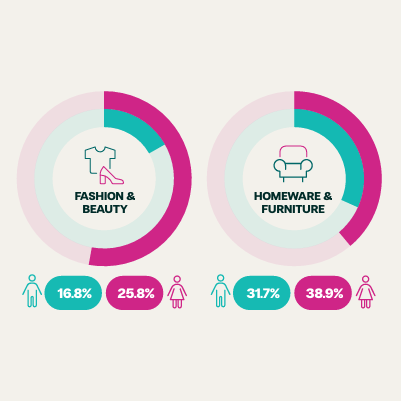Buy Now, Pay Later and Electronics: The benefits for merchants and lenders

TVs, laptops, mobile phones, games consoles and other electronics are expensive items that ask customers to part with a big wad of cash. No wonder then that Buy Now, Pay Later (BNPL) and retail finance are becoming increasingly popular with retailers selling electronics.
By offering customers better ways to manage their finances, these retailers usually benefit from increased sales. This is especially true around key sales windows, such as Black Friday. These uplifts in sales have proved especially important during the cost of living crisis, which has seen dampened sales and low consumer confidence.
That’s not to say it’s as straightforward as ‘install solution, earn more money.’ Retailers must be mindful that BNPL and retail finance lenders usually charge between 2–8% of the value of the transaction in fees, with additional set-up and subscription fees to boot. For the retailer, these costs need to be justified.
That’s why, in this article, we are going to explore everything you need to know about offering Buy Now, Pay Later and retail finance for consumer electronics. Let’s start with the basics…
What is retail finance?
Retail finance has many names. It’s also known as checkout finance, point-of-sale finance, and paying in instalments. You may have also heard of Buy Now, Pay Later, Pay in 30, and Short-term Interest-free Credit, which are specific retail finance products.
The term refers to many types of finance offered at a retailer’s checkout, all of which allow consumers to delay and/or spread the cost of their purchase:
Buy Now, Pay Later
The most well known of all retail finance products is Buy Now, Pay Later (BNPL). So well known, in fact, that it is often used to describe the retail finance industry in general.
But as we say at Divido: all Buy Now, Pay Later is retail finance, but not all retail finance is Buy Now, Pay Later.
BNPL is a type of credit typically available up to £250. Consumers can split the cost of a purchase into three or four instalments using BNPL, which are repayable within a twelve month period. There are generally no extra fees unless a payment is missed, and it usually comes with 0% APR. Some BNPL providers even allow customers to buy without asking for a deposit.
Hard credit checks are sometimes not required with Buy Now, Pay Later, even for electronics. BNPL providers use a soft search to determine whether a customer is credit-worthy. But since this is only possible for items up to £250, it may not be possible to buy expensive electronics with BNPL.
Short-term Interest-free Credit (STIFC)
Short-term Interest-free Credit (STIFC) works on the same principles as Buy Now, Pay Later. The cost is split into instalments, repayable within a short time frame, and there is no extra interest to pay. However, there are some distinct differences between the two.
For a start, STIFC allows for much longer repayment periods – up to three years. It also covers much bigger purchases than BNPL, up to £25,000 in value.
This means STIFC is far more suitable for purchasing electronics. STIFC is also offered by regulated lenders, so expect a hard credit check when choosing STIFC for electronics purchases.
Interest-bearing credit
Just like STIFC, except lenders begin to add interest on loans with repayment windows of three years or more. Merchants may receive better rates from lenders if they opt for interest-bearing credit, as the consumer foots the bill.
Pay in 30
Does what it says on the tin. Pay in 30 allows consumers to delay payment for a purchase for 30 days. Credit limits average £4,000.

What electronics can I buy using Buy Now, Pay Later or retail finance?
TVs, laptops, phones, tablets, computers, games consoles, home hubs… Indeed, pretty much any consumer electronic you can think of can be bought using retail finance products. But as we’ve just seen, the type of finance available to you will depend on the price of your shopping basket.
Buy Now, Pay Later can only be used for items up to £250 in value, Pay in 30 for items up to £4,000, and STIFC and Interest-bearing Credit for items up to £25,000.
Since the average cost of electronics tends to be higher than £250, you may find that Buy Now, Pay Later won’t cover the cost of your electronics sales.
|
Electronics Item |
Average Price Paid (GBP) |
|
TV |
£300–500 |
|
Laptop |
£530 |
|
Gaming laptop |
£700–900 |
|
Computer |
£300–500 |
|
Games console |
£400 |
So, while it’s possible to use Buy Now, Pay Later for electronics, consumers are limited to goods at the lower end of the market, such as speakers, headphones and home hubs.
STIFC and Interest-bearing Credit, on the other hand, are well-suited to TVs, laptops, gaming laptops and high-end speakers.
The type of retail finance product you implement at your checkout will therefore depend on the type of products you, or your merchant partner sells.
Is it possible to use Buy Now, Pay Later for electronics with no credit check or deposit?
Potentially. But, again, this will depend on the cost of the product and the type of finance available.
Buy Now, Pay Later providers do not usually require a hard credit check, and flexible payment terms may mean that a deposit is not required. But as we mentioned, this is typically only available for purchases up to £250. Therefore, you may not be able to offer BNPL for more expensive electronics.
You may therefore have to rely on a third-party retail finance provider. In these cases, the customer is more likely to undergo a credit check and pay a deposit.
Merchants must therefore consider whether offering Buy Now, Pay Later without a credit check or deposit is right for their business. Offering retail finance without stringent affordability checks could harm your customer’s financial wellbeing, especially if they later miss a payment. This may also damage your brand in the process.
Should I implement retail finance (Buy Now, Pay Later) for my electronics business?
Call us biassed, but we see retail finance as the future of big-ticket purchases, making it the perfect solution for electronics retailers. Though each product is different, the benefits of offering retail finance are similar:
Win more customers
Retail finance gives you the power to grow your customer base and attract new customers by reducing the upfront cost of your goods. Those who may not have initially been able to afford to buy a new TV from your store can now pay over time.
Beat your competitors
Now more than ever, customers are actively looking to buy TVs, laptops and games consoles through retail finance. Offering finance can therefore draw customers away from your competitors who have not yet implemented it themselves. And, if your competitors already offer interest-bearing finance, you can offer your customers a better rate with Short-term Interest-free Credit.
Shift more product
Once your customer discovers they can spread the cost of their shopping, they may be inclined to add additional items to their baskets. What started as a straightforward TV purchase may end up with the same customer adding speakers, headphones and other accessories to their purchase. This boost in sales may not have happened without retail finance, proving the value of offering this payment type at the checkout.
Convert more carts
Not only are new customers drawn to your website, but they’re also more likely to follow through with their purchase. 70% of carts are abandoned in e-ecommerce, but this figure can be reduced by up to 20% when you offer retail finance.
That being said, there are some potential downsides you will need to consider:
Merchant transaction fees
An underperforming retail finance product may cost more than it’s worth. Fees are around 2% to 8% for individual transactions, and there are also initial set-up and monthly licensing fees to consider.
Reputational damage
Despite offering customers greater flexibility in the ways they manage their spending, retail finance is perceived negatively by the media. While we don’t believe this reputation is fair, it’s still important to be aware that offering retail finance may lead to negative press. This is especially true if you don’t conform with new regulatory requirements, or if your customers end up in debt. The way to combat this is to partner with a compliant and mature lender.
Refunds
We covered the thorny issue of refunds in this article. To summarise, refunds can be troublesome for merchants, consumers and lenders if the correct procedures are not in place at the start of an agreement. Your customers will begrudge continuing to pay for items they have already returned, and it may fall on you – the relationship owner – to resolve the issue. Communication is key, so it’s important you establish clear lines with your lender at the beginning of your agreement.
Want to learn more?
Implementing Buy Now, Pay Later for electronics can pay dividends in the long-run. But there is much more you need to know before making the leap into the world of retail finance. For instance, how will upcoming regulation affect the sector? And what is the best way to maximise the value of your retail finance proposition?
Divido works with Tier One lenders to provide best-in-class retail finance lending to merchants around the world. If you’re thinking of launching Buy Now, Pay Later for electronics in 2023, you’ll find plenty of helpful information across our blog. Or, if you want expert help and advice, reach out to our team.
Good luck on your retail finance journey!
Keen to know more?








